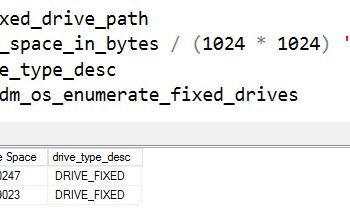In one of the recent consultancy, I was asked if I can give working example of BINARY_CHECKSUM. This is usually used to detect changes in a row. If any row has any value changed, this function can be used to figure out if the values are changed in the rows. However, if the row is changed from A to B and once again changed back to A, the BINARY_CHECKSUM cannot be used to detect the changes. Let us see quick example of the of same.
Following example is modified from the original example taken from BOL.
USE AdventureWorks;
GO
-- Create table
IF EXISTS (SELECT * FROM sys.objects WHERE OBJECT_ID = OBJECT_ID(N'[dbo].[myTable]') AND TYPE IN (N'U'))
DROP TABLE [dbo].[myTable]
GO
CREATE TABLE myTable (column1 INT, column2 VARCHAR(256));
GO
-- Insert Value
INSERT INTO myTable VALUES (1, 'test');
GO
-- Check the Checksum
SELECT BINARY_CHECKSUM(*) AS BCH FROM myTable;
GO
-- Change the value
UPDATE myTable SET column2 = 'TEST';
GO
-- Check the Checksum
SELECT BINARY_CHECKSUM(*) AS BCH FROM myTable;
GO
-- Change the value
UPDATE myTable SET column2 = 'test';
GO
-- Check the Checksum
SELECT BINARY_CHECKSUM(*) AS BCH FROM myTable;
GO
-- Clean up
DROP TABLE [dbo].[myTable]
GO
Let us check the resultset here.

You can clearly see when the values are change the value of the BINARY_CHECKSUM is changed as well, however, if the value is changed back to original value the BINARY_CHECKSUM is restored. Are you using this feature in your application, if yes, I am interested to know where and when do you use it.
Reference: Pinal Dave (https://blog.sqlauthority.com)





